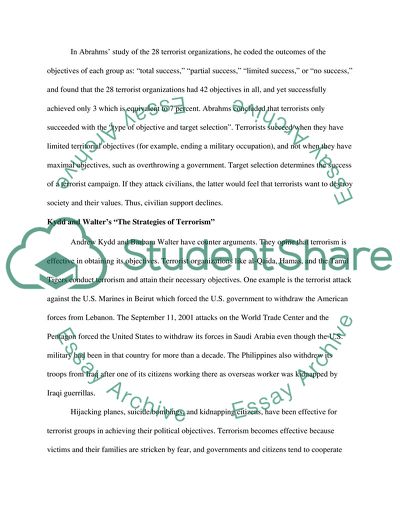Cite this document
(The Strategies Of Terrorism Research Paper Example | Topics and Well Written Essays - 4000 words, n.d.)
The Strategies Of Terrorism Research Paper Example | Topics and Well Written Essays - 4000 words. Retrieved from https://studentshare.org/sociology/1789922-research-and-analysis-of-terrorism
The Strategies Of Terrorism Research Paper Example | Topics and Well Written Essays - 4000 words. Retrieved from https://studentshare.org/sociology/1789922-research-and-analysis-of-terrorism
(The Strategies Of Terrorism Research Paper Example | Topics and Well Written Essays - 4000 Words)
The Strategies Of Terrorism Research Paper Example | Topics and Well Written Essays - 4000 Words. https://studentshare.org/sociology/1789922-research-and-analysis-of-terrorism.
The Strategies Of Terrorism Research Paper Example | Topics and Well Written Essays - 4000 Words. https://studentshare.org/sociology/1789922-research-and-analysis-of-terrorism.
“The Strategies Of Terrorism Research Paper Example | Topics and Well Written Essays - 4000 Words”, n.d. https://studentshare.org/sociology/1789922-research-and-analysis-of-terrorism.


